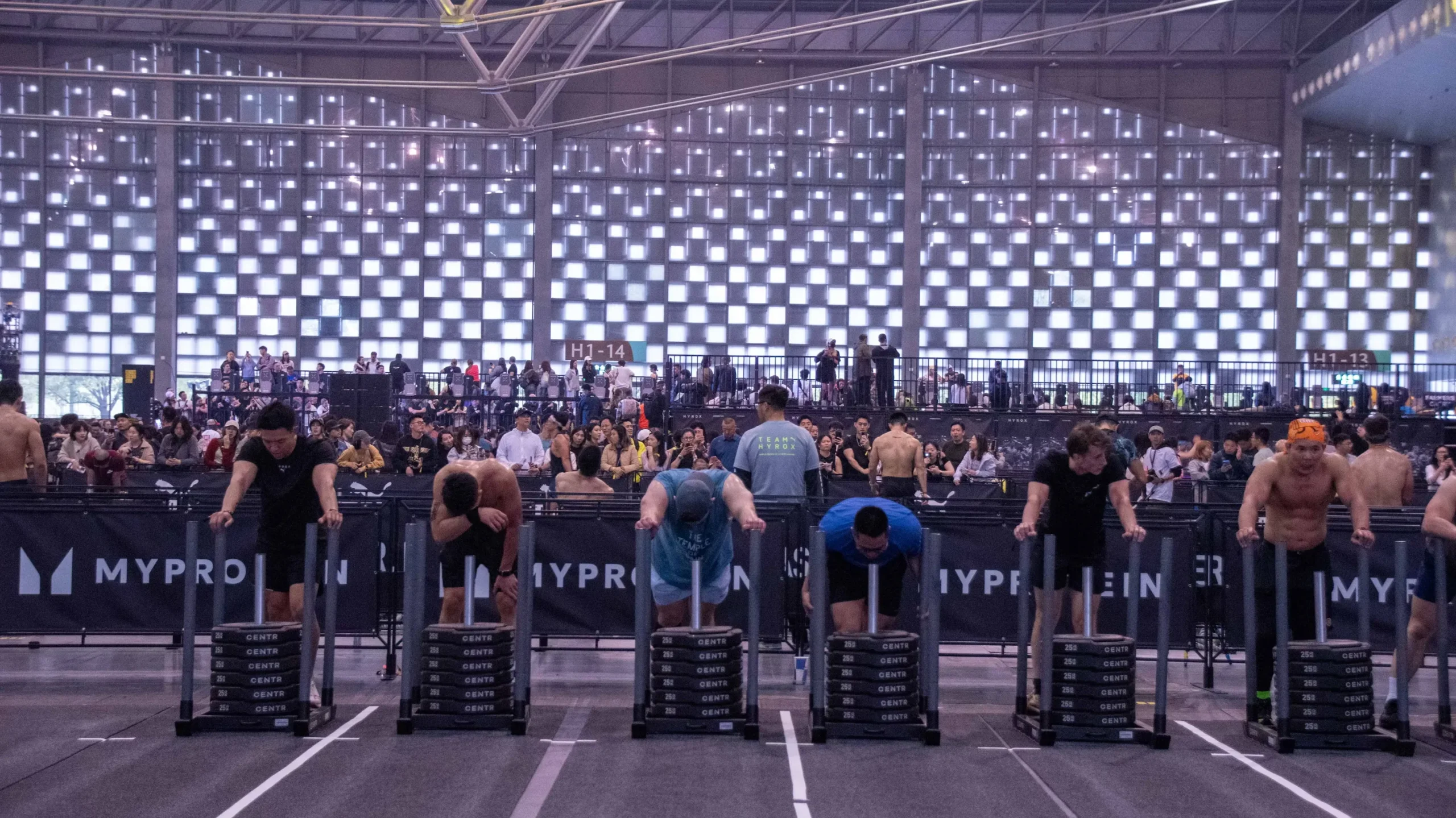Introduction to 100-Second Challenges
The 100-second challenges represent a novel approach to evaluating real-world fitness by distilling performance into quick tests that provide significant insights into an individual’s capabilities. Unlike traditional fitness assessments that are often time-consuming and complex, these challenges focus on measurable tasks that can easily be executed in a short duration, thus allowing for immediate feedback on various aspects of physical performance. This innovative method showcases functional strength, agility, endurance, and the readiness of individuals to handle everyday physical demands.
The primary objective of 100-second challenges is not merely to gauge fitness levels but also to enhance training longevity by emphasizing practical skills over rote performance metrics. Each challenge is designed to reflect movements that individuals may encounter in daily life, thus making these assessments profoundly relevant. In doing so, they expose both strengths and areas needing improvement within a compact timeframe, capturing the essence of functional training. This kind of testing can foster a more engaged fitness culture, as it prioritizes results that participants can readily see and apply.
Understanding Time Under Tension
Time Under Tension (TUT) is a critical concept in fitness training that refers to the total time a muscle is under strain during an exercise. This metric is intricately linked to muscle building and endurance, as it influences the muscular adaptation process. When muscles are engaged for an extended period, they undergo significant stress, leading to micro-tears that subsequently heal stronger and larger. By understanding and manipulating TUT, trainers can effectively enhance functional strength, which is essential for executing everyday tasks efficiently.
Incorporating TUT into training protocols not only benefits hypertrophy but also improves muscular endurance. When individuals train within a 100-second window, they create a perfect balance between maximizing intensity and maintaining accountability. This duration is long enough to achieve meaningful fatigue in muscle fibers without risking excessive fatigue or injury that might result from prolonged sessions. As such, 100 seconds serves as an effective challenge in assessing fitness levels by evaluating both strength and stamina.
The beauty of using a 100-second timeframe is its versatility across various types of strength training exercises. Whether utilizing bodyweight movements, free weights, or resistance bands, maintaining TUT for this duration demands a strategic approach to tempo and rest. For example, performing an exercise with a controlled eccentric phase and an explosive concentric phase can enhance the benefits of TUT, ensuring that each second contributes to improved functional strength and training longevity.
Ultimately, the adoption of TUT as a focal point in fitness assessment allows for an adaptable and efficient training regimen. Fitness challenges that emphasize a 100-second effort not only provide a realistic measure of one’s capabilities but also foster a disciplined approach toward achieving fitness goals. Understanding the implications of TUT will enable individuals to fine-tune their training strategies and optimize their overall performance.
Plank Challenge: Core Stability in 100 Seconds
The plank challenge serves as an essential test of core stability, emphasizing the importance of functional strength in enhancing overall fitness performance. To execute the plank correctly, one must maintain a straight line from the head to the heels, engaging multiple muscle groups including the rectus abdominis, transverse abdominis, obliques, and muscles in the lower back. Proper alignment is crucial; the elbows should be positioned directly under the shoulders, and the core must be activated, preventing sagging or arching of the back.
To improve performance in the plank challenge, consider implementing various strategies. Incorporating dynamic movements—such as side planks and plank variations—can help increase endurance and strengthen different muscles within the core. Establishing a routine focused on progressive overload will enhance training longevity; gradually increasing hold times can lead to significant improvements in core stability. Additionally, emphasizing breath control during the exercise can help maintain focus and stabilize the core throughout the duration of the challenge.
The results of the plank challenge offer insights into one’s overall fitness levels and functional strength. A solid plank hold reflects not just core strength, but also the stability necessary for various physical activities, from daily tasks to sports. Individuals can gauge their performance against established benchmarks or track progress over time, allowing for tailored training adjustments and goal setting. By regularly incorporating the plank into fitness routines, participants can develop a stronger core which plays a crucial role in enhancing overall athletic performance and reducing the risk of injury.
Wall Sit Challenge: Lower Body Endurance Test
The wall sit challenge is a popular test of lower body endurance that primarily targets the muscles of the legs while requiring minimal equipment. To perform a wall sit, an individual must find a flat wall and slide down into a seated position, with thighs parallel to the ground and back pressed against the wall. The knees should remain directly above the ankles, ensuring proper alignment to avoid injury. This static exercise involves maintaining the position for as long as possible, effectively challenging muscular endurance and functional strength in the lower body.
The wall sit engages several muscle groups, including the quadriceps, hamstrings, and gluteus muscles. The quadriceps play a primary role in maintaining the seated position, which helps to build not only strength but also the stamina necessary for various physical activities. The hamstrings and glute muscles engage as secondary supporters, ensuring stability and balance throughout the exercise. Consequently, the wall sit serves as an effective indicator of an individual’s lower body strength and muscular endurance.
This challenge correlates significantly with functional fitness as it mimics everyday activities like sitting down and standing up, which are ingrained in daily routines. Developing lower body endurance through exercises like the wall sit can enhance training longevity, allowing individuals to perform daily tasks with greater ease and efficiency. Furthermore, improved functional strength derived from such exercises promotes better posture and prevents injury by stabilizing the hips and knees. Overall, the wall sit challenge not only tests endurance but also instills the importance of functional fitness in enhancing one’s overall physical capability.
Push-Up Challenge: Upper Body Strength Assessment
The push-up challenge serves as a valuable upper body strength assessment, allowing individuals to evaluate their functional strength in a straightforward manner. This exercise engages multiple muscle groups, including the pectorals, deltoids, and triceps, while also requiring core stability and coordination. To perform a traditional push-up, one must assume a plank position with hands placed slightly wider than shoulder-width apart. The body should remain in a straight line from head to heels throughout the movement, ensuring that the core is engaged. As the individual lowers their body by bending their elbows, it is imperative to maintain proper alignment to prevent injury.
There are several variations of push-ups that can cater to varying fitness levels. Individuals new to exercise may begin with incline push-ups, where the hands are elevated on a sturdy surface, reducing the load on the upper body. Conversely, advanced participants can incorporate decline push-ups, where feet are elevated, increasing the difficulty and engaging the muscles even more. Other adaptations include diamond push-ups, which focus on the triceps, and wide-grip push-ups that emphasize the chest. These variations not only make the exercise accessible but also allow individuals to progressively enhance their upper body strength over time.
Performance in the push-up challenge reflects overall fitness and functional strength, indicating not only upper body endurance but also an individual’s capacity to perform daily tasks that require pushing and lifting. As such, it can be a useful tool for assessing an individual’s training longevity and readiness for more intense physical activities. In rehabilitation settings, practitioners often use push-up performance as a metric for progress, making it a versatile indicator of physical competence across numerous populations.
Burpee Challenge: Full-Body Conditioning
The burpee challenge is a widely recognized test of physical fitness that evaluates an individual’s functional strength, endurance, and coordination. This full-body exercise engages multiple muscle groups, making it a comprehensive assessment of one’s conditioning capabilities. By performing burpees, participants can simulate real-world movements, thus enhancing their overall physical preparedness for daily activities.
A burpee consists of a squat, jump, and push-up, demanding both aerobic and anaerobic energy systems. This combination makes it effective for improving cardiovascular fitness while also building power and strength. To execute a proper burpee, start from a standing position, drop into a squat while placing your hands on the ground, kick back into a push-up position, return to the squat, and then explosively jump into the air. This sequence aids in developing training longevity as it promotes muscular and aerobic endurance.
Mastering the burpee requires practice and proper technique. Beginners may start with modified versions, such as removing the push-up or reducing the jump height, to maintain form and reduce the risk of injury. Progressing gradually is essential for developing functional strength effectively. Other tips for improving burpee performance include focusing on breath control, maintaining a steady rhythm, and ensuring adequate recovery between attempts. The burpee challenge not only enhances one’s fitness but also translates to better performance in sports and everyday tasks, arguing for its role in fostering functional strength.
The versatility of the burpee makes it an invaluable addition to any training regimen. Its ability to combine strength, speed, and endurance means it is suitable for athletes of all levels. As a full-body workout, the burpee promotes overall conditioning and prepares individuals to perform more effectively in various physical scenarios they may encounter in daily life.
Incorporating Other Quick Tests: Variety in Challenges
In the realm of 100-second challenges, incorporating a diverse range of exercises is pivotal for enhancing overall functional strength and ensuring training longevity. By integrating various quick tests such as mountain climbers, jump squats, and high knees, individuals can effectively engage multiple muscle groups, thereby expanding the scope of their workouts while also catering to different fitness levels.
Mountain climbers, for instance, are a dynamic exercise that not only elevates heart rate but also activates the core, shoulders, and legs. This full-body movement enhances functional strength by emulating movements required in daily activities, contributing to improved agility and coordination. Additionally, mountain climbers can be easily modified in intensity to match individual fitness capabilities, making them a versatile option for various skill levels.
Jump squats are another excellent inclusion in this fast-paced regimen. They focus on the lower body, targeting the quadriceps, hamstrings, and glutes. This explosive exercise enhances muscular power, which can be beneficial for overall athletic performance. Incorporating jump squats offers a high-intensity, low-time commitment option that strengthens muscles while also promoting endurance and cardiovascular health, crucial for maintaining training longevity.
High knees serve as an additional quick test that boosts heart rate and improves agility. This variation primarily targets the hip flexors while conditioning the cardiovascular system. By integrating high knees into the 100-second challenge framework, participants can further enhance coordination and dynamic flexibility, which are essential traits for functional strength in real-world activities.
By diversifying the exercises involved in these challenges, one can create a well-rounded fitness routine that not only improves strength across various muscle groups but also keeps the workouts engaging. This approach ultimately champions a long-term commitment to fitness and supports sustained physical health.
Tracking Progress and Setting Goals
Effective tracking of progress is indispensable for any fitness regimen, particularly when engaging in the 100-second challenges designed to improve functional strength. The primary aim of these short assessments is to reflect real-world fitness capabilities that relate to daily life activities. Therefore, monitoring your performance not only helps in establishing a benchmark but also aids in recognizing incremental improvements, fostering motivation.
When setting goals, it is crucial to ensure they are realistic and attainable. Begin by conducting an initial assessment that gauges your current level of functional strength and overall fitness. This serves as your starting point from which to build. For instance, if your first attempt at a challenge yields a particular score or number of repetitions, consider setting a goal that aims for a modest increase. The SMART criteria—Specific, Measurable, Achievable, Relevant, and Time-bound—can significantly enhance the goal-setting process. A well-defined target allows individuals to focus on specific outcomes while maintaining a clear vision of what needs to be accomplished.
Regular assessments play a vital role in tracking improvements over time. Setting a fixed schedule, such as monthly tests of the 100-second challenges, can provide a structured framework conducive to growth. This consistency breeds familiarity, reducing anxiety over assessments and allowing for better performance tracking. Moreover, these periodic evaluations serve as a motivational tool; noting personal bests fosters a sense of achievement and encourages ongoing participation.
Additionally, maintaining accountability can be achieved by sharing goals with peers or joining a fitness community. Engaging in discussions about progress and challenges experienced can inspire others while reinforcing commitment to individual objectives. With a clear strategy for tracking progress and setting achievable goals based on realistic expectations, individuals can ensure that their pursuit of functional strength and training longevity remains productive and enjoyable.
Final Thoughts: The Impact of Quick Fitness Tests
In the domain of fitness assessment, the emergence of 100-second challenges has significantly reshaped how individuals evaluate their physical capabilities. These quick fitness tests provide unique benefits that cater to a diverse range of people, regardless of their fitness background or experience level. The efficiency of these tests allows participants to gauge their functional strength in a straightforward manner, which is crucial for understanding one’s body mechanics and performance capabilities in everyday tasks.
One of the most notable advantages of 100-second challenges is their accessibility. Individuals do not require specialized equipment or extensive space to conduct these tests, making them feasible for anyone from seasoned athletes to beginners. This inclusivity fosters a broader understanding of one’s training longevity by allowing individuals to engage with their fitness goals at any stage in their journey. The simplicity of performing these tests encourages consistent practice, ultimately enhancing the commitment to a fitness regime and supporting long-term health benefits.
Furthermore, these quick assessments provide valuable insights into overall fitness levels. By periodically repeating 100-second challenges, participants can monitor their progress and identify areas needing improvement. Such reflection not only boosts motivation but also informs training decisions, ensuring that individuals are working towards functional strength goals tailored to their needs. Hence, integrating 100-second challenges into regular fitness routines could serve as a powerful tool for personal development.
In conclusion, embracing the concept of 100-second challenges can greatly enhance one’s approach to assessing fitness. Their efficiency and simplicity, coupled with the insights gained from consistent practice, make these quick tests a worthwhile addition to any fitness program. Engaging with these challenges will not only aid in measuring current abilities but will also provide a platform for celebrating improvements over time, fostering a deeper understanding of one’s own health and fitness journey.




